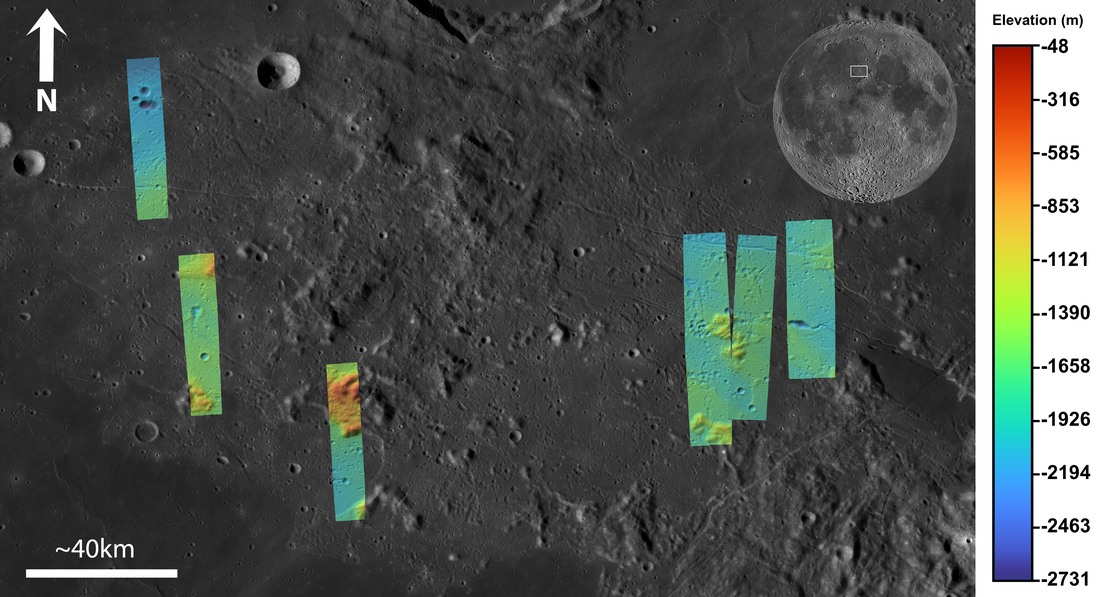
The Apennine Bench Formation (ABF) is an unusual light plains unit, a region that is smooth and flat with high albedo (reflectance). Located on the southeast edge of the Imbrium Basin, near the Montes Apenninus (Apennine Mountains), it is west of the Apollo 15 landing site and south of Archimedes crater (~77 km across). The ABF is relatively smooth (it lies between the rougher patches in the image above), not as dark as typical volcanic mare plains (the contrast between the two is best seen in the lower left of the image above), and has a unique "KREEPy" chemical signature. The acronym ‘KREEP’ is used to identify higher abundances of potassium (K), rare earth elements (REE), and phosphorus (P). LRO observations enable scientists to investigate the ABF as part of its extended mission goal "to explore the evolution of lunar volcanism". The ABF’s KREEP signature is of particular interest because samples of KREEP material are scarce in the collection of returned Apollo samples, and studying this material would provide a new window into ancient volcanism on the Moon.
KREEP materials are thought to have originated as part of the late stage of the magma ocean (more than 4 billion years ago), which influenced lunar volcanism thereafter. By relative dating, we can tell that the ABF formed after the Imbrium basin impact event (around 3.85 billion years ago)and before Mare Imbrium – the massive lava deposit that erupted within the basin, filling it to about half its original depth. This stratigraphy (time order) tells us that the ABF could be an example of pre-mare volcanism, whose magma came from a different source than the later basaltic eruptions that cover about 30% of the nearside. Since its formation, the ABF has been modified by many impact craters. Chief among them is Archimedes Crater (a portion of which is seen on the north edge of the first image), whose formation resulted in several secondary craters across the ABF, and may have deposited a large amount of ejecta that formed the mountains seen in the center of the opening image (south of Archimedes Crater).

Despite the modication by impact craters over billions of years, there are many fascinating features that can be discerned within the ABF. For example, Kathleen is a pyroclastic vent with a sinuous rille (colloquially known as Rima Mozart [Not IAU confirmed]) that extends from the southeast end of the vent. Rilles are large channels formed by sustained channelized lava flows. This vent is a great location to investigate ancient volcanism on the Moon.
The DTMs overlaid on top of the image mosaic in the first image were released to the Planetary Data System (PDS) in December of 2019 for use in support of new scientific studies of the ABF. DTMs are digital representations of elevation data. Like an image, they are made up of matrices of values, but the colors (or shades of grey in the full-resolution version of the DTM below) represent elevations. The analysis of DTMs like these allows us to measure slope, roughness, elevation, and volume of these features, which can help us learn more about impact cratering, volcanism, and tectonism throughout the ABF. In addition to these remote science applications, DTMs can be used to plan landing sites and traverses for future exploration of the lunar surface.
Related Featured Image Posts:
Mare Moscoviense Constellation Site
Amazing Orientale Peaks and Valleys
You can find the DTMs shown above in the LROC RDR product site here
Published by Thomas Tyburczy on 29 June 2020